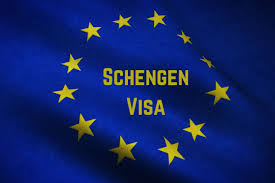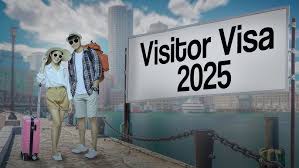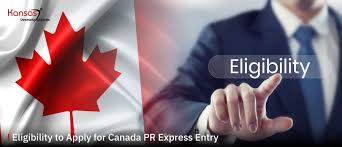Schengen Visa Guide 2025: Requirements, Fees, and Application Process

The Schengen visa is one of the most sought-after travel documents in the world, allowing entry into 27 European countries with a single visa. Whether you’re planning to visit for tourism, business, study, or family reasons, understanding the Schengen visa requirements and application process is crucial. This guide provides updated information on the Schengen visa process in 2025, including requirements, fees, and step-by-step application instructions.
What is a Schengen Visa?
A Schengen visa is a short-term visa that permits travel within the Schengen Area for up to 90 days within a 180-day period. The Schengen Area consists of 27 European countries that have abolished border controls, allowing seamless travel between them.
Schengen Area Countries (as of 2025)
Austria, Belgium, Czech Republic, Denmark, Estonia, Finland, France, Germany, Greece, Hungary, Iceland, Italy, Latvia, Liechtenstein, Lithuania, Luxembourg, Malta, Netherlands, Norway, Poland, Portugal, Slovakia, Slovenia, Spain, Sweden, Switzerland, and Croatia.
Types of Schengen Visas
- Tourist Visa – For leisure and sightseeing.
- Business Visa – For business meetings, conferences, and trade fairs.
- Student Visa – For short-term studies or training programs.
- Medical Visa – For medical treatment in a Schengen country.
- Family Visit Visa – For visiting relatives or friends.
- Transit Visa – For travelers passing through a Schengen country en route to a non-Schengen destination.
Schengen Visa Requirements (2025 Update)
To apply for a Schengen visa, applicants must submit the following documents:
- Completed Visa Application Form – Available on the official website of the embassy or consulate.
- Valid Passport – Must be valid for at least three months beyond the intended departure date from the Schengen Area.
- Passport-Size Photos – Two recent photos following Schengen visa specifications.
- Travel Itinerary – Flight reservations and proof of accommodation (hotel bookings or invitation letter from a host).
- Travel Insurance – Minimum coverage of €30,000 for medical emergencies and repatriation.
- Proof of Financial Means – Bank statements, salary slips, or sponsorship letter to show sufficient funds for the trip.
- Employment Status Proof:
- Employed: Employer letter and recent payslips.
- Self-employed: Business registration documents and tax returns.
- Student: Enrollment certificate and sponsorship letter (if applicable).
- Purpose-Specific Documents – Business invitations, university acceptance letters, or medical reports (depending on visa type).
Schengen Visa Fees (2025)
- Adults: €80
- Children (6-12 years): €40
- Children under 6: Free
- Certain applicants (students, researchers, and family members of EU citizens) may qualify for fee exemptions.
How to Apply for a Schengen Visa
Step 1: Determine the Right Embassy or Consulate
Apply at the embassy/consulate of the country you plan to stay in the longest. If visiting multiple countries with equal stays, apply at the embassy of the first entry country.
Step 2: Complete the Visa Application Form
Fill out the Schengen visa application form online or download and complete it manually.
Step 3: Book a Visa Appointment
Schedule an appointment at the nearest Schengen country embassy, consulate, or visa application center (e.g., VFS Global).
Step 4: Pay the Visa Fee
Pay the required fee using the specified payment methods (credit/debit card, bank transfer, or cash at the visa center).
Step 5: Attend the Visa Interview
Visit the embassy/consulate on your appointment date with all required documents. The interview may include questions about your trip, finances, and return plans.
Step 6: Provide Biometrics (if required)
First-time applicants need to provide fingerprints and a digital photograph.
Step 7: Wait for Visa Processing
Schengen visa processing usually takes 15-30 days, but delays may occur during peak seasons.
Step 8: Collect Your Visa
If approved, the visa will be stamped in your passport. If rejected, you will receive a reason for denial and may appeal the decision.
Schengen Visa Processing Time
- Standard Processing: 15-30 days
- Express Processing (if available): 7-10 days
- Delays may occur due to additional document verification or high application volume.
Common Reasons for Schengen Visa Rejection
- Insufficient financial proof
- Lack of proper travel insurance
- Incomplete or incorrect application form
- Weak travel history or immigration risk concerns
- Suspicious travel itinerary
Tips for a Successful Schengen Visa Application
- Apply at least 3 months before your planned travel date.
- Ensure all documents are accurate and up to date.
- Have a well-documented itinerary and clear purpose for travel.
- Maintain a strong financial record to prove sufficient funds.
Conclusion
The Schengen visa opens doors to seamless travel across 27 European countries, making it an essential document for international travelers. By understanding the updated 2025 requirements, application process, and fees, you can improve your chances of approval and enjoy hassle-free travel. Plan ahead, prepare your documents carefully, and apply on time to make your Schengen travel dreams a reality.


